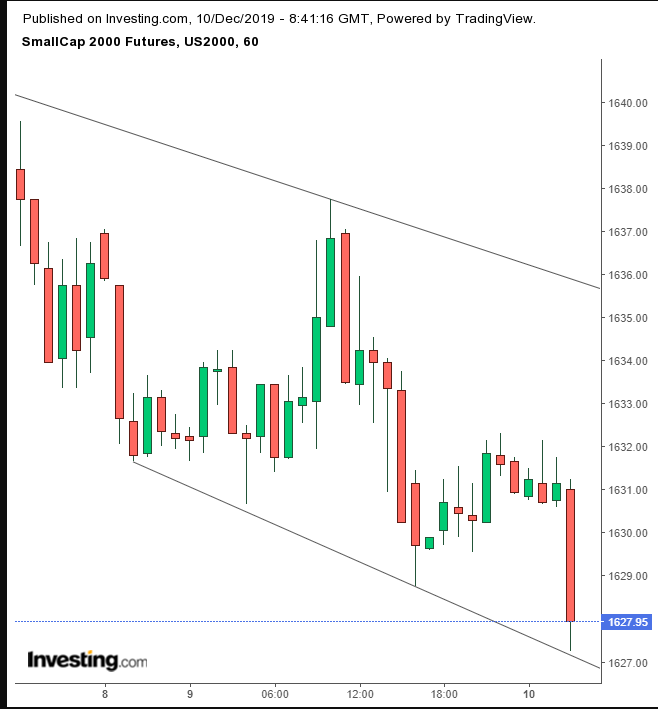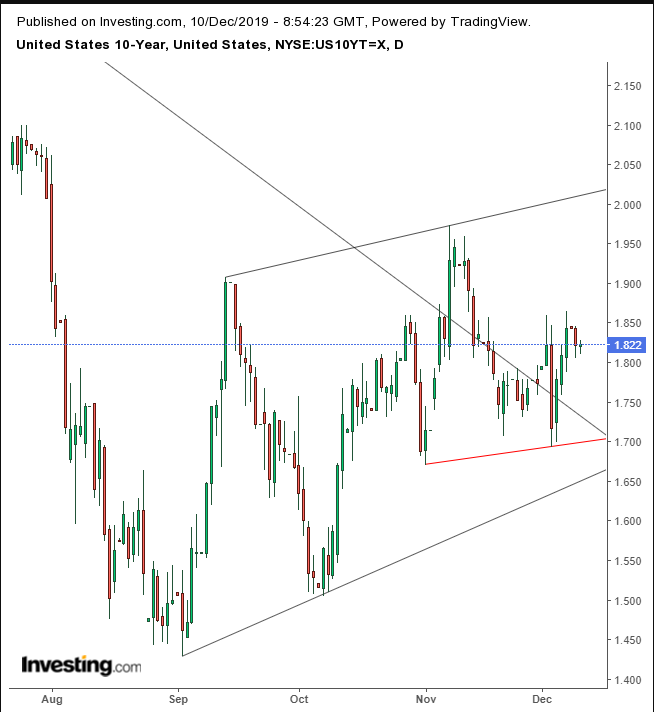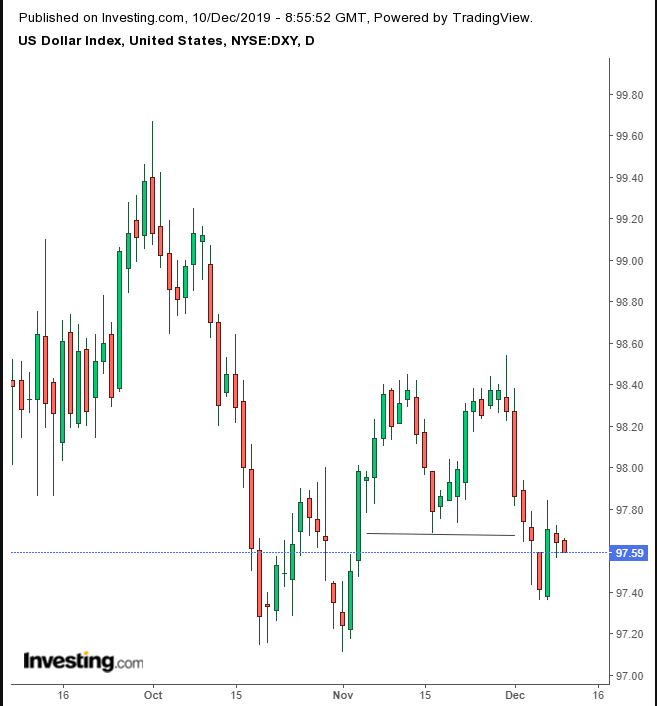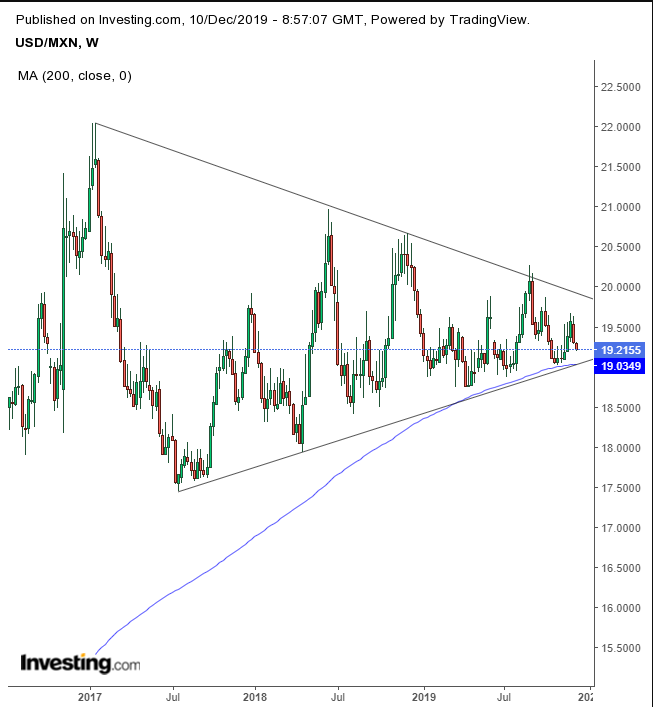- U.S. futures slide as investors rotate out of risk ahead of U.S. tariff deadline
- European stocks get hit the hardest by rush to safety
- Treasury yields continue falling on widespread caution
- Mexican peso gains on hopes for new USMCA deal
Key Events
Financial markets were largely shedding risk this morning as investors fretted over the looming Dec. 15 tariff deadline, when the U.S. is expected to slap levies on all remaining Chinese goods yet to be taxed—more precisely, on $156 bn of key consumer items, whose higher prices would be felt immediately by a vast mass of consumers.
A comparable response by China is all but inevitable, especially as the country is already struggling with an economic slowdown.

Futures on the S&P 500 and Dow hovered clearly in the red and those on NASDAQ 100 and the Russell 2000 underperformed, as investors presumably cashed out after a solid run ahead of Sunday’s trade risk.
European shares were hit the hardest, with the STOXX 600 gapping down, falling for the second day and dragging all sectors into negative territory.
Earlier in Asia, regional equities ended mixed amid thin volumes, as traders turned defensive ahead of key global central banks decisions and the dreaded tariff deadline.
South Korea’s KOSPI (+0.45%) outperformed, followed by China’s Shanghai Composite (+0.1%). Australia’s S&P/ASX 200 (-0.34%) lagged, as the country’s economy is highly sensitive to Chinese market dynamics—China being its biggest two-way trading partner.
Global Financial Affairs

In the bonds space, yields on 10-year Treasurys slid as investors rotated into safety. We have been discussing that rates have been trending upwards in the short term, while being bogged in a range around the long-term downtrend line since November 2018.
A possible small H&S top developed, with the potential neckline marked in red. A downside breakout, which would happen if equities fall, would include one below the rising channel, extending the long-term downtrend.

Meanwhile, the Dollar Index was slightly lower for the second day—possibly confirming the neckline of a small double top—ahead of Fed and ECB interest rates decisions—on Wednesday and Thursday respectively.

The Mexican peso strengthened on growing optimism that the U.S.-Mexico Canada Agreement (USMCA), the trilateral trade accord to replace Nafta, will soon get the final stamp of approval.
Up Ahead
Market Moves
Stocks
Currencies
Bonds
Commodities
